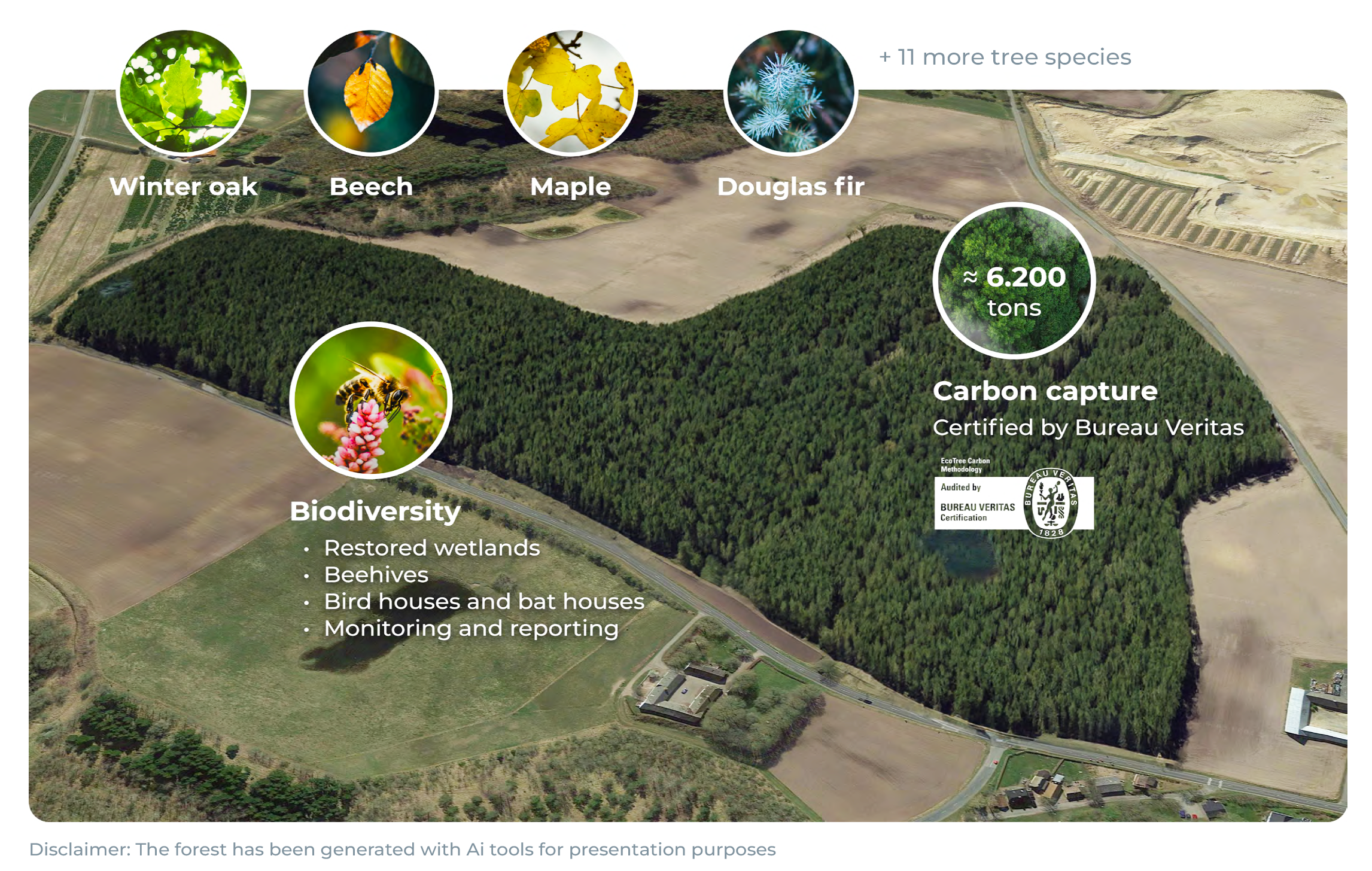
We’re reforesting an old gravel mine!
We are committed to bringing biodiversity back by planting a forest that is as natural as possible for wildlife and people to use
The area is an old gravel pit in Denmark where the soil is sandy and gravelly. After excavation in the gravel pit stopped, the area has been re-established with a layer of soil. Heavy machinery has been working on the area, resulting in damage to the soil structure. Some channels are formed from soil erosion during heavy rainfall, causing water streams to run during rainstorms
Did you know that Denmark’s has seen a decline in biodiversity, with 23.7% of assessed species being red-listed. Denmark has 570.800 ha of forest, equivalent to just over 13 percent of the total land cover. If we compare with the EU as a whole, Denmark is a forest deprived country. Originally, most of Denmark was covered by forest, but after centuries of uncontrolled logging and deforestation for agriculture, the forest area around 1820 was down to only 2 to 3 percent. Denmark uses far more wood than it produces. Each year around 4.3 million m3 are felled. Forest plantations are exploitative and do nothing to help biodiversity.
There will be stream restoration to reduce erosion. These channels, along with the lake, improve the biodiversity potential of the forest. To achieve high production and thus climate impact, it is preferable to use as many coniferous trees as possible, conifers are better at creating a forest climate, which would also benefit the deciduous trees.


